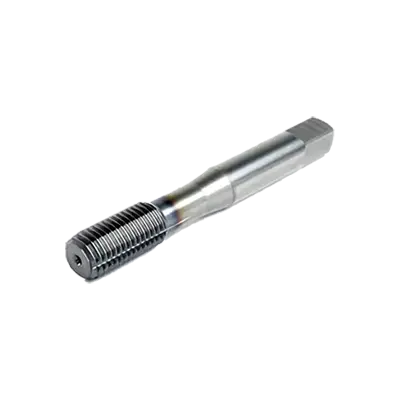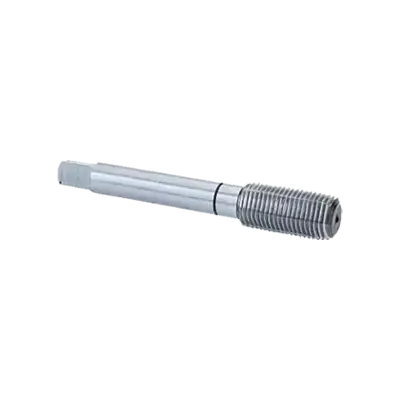Call +(254) 703 030 000 / 751 483 999 / 721 704 777
- Home
- Machining
- Threading
- Taps Internal Threading Tools
- Chip Free Thread Forming Taps
.....Read More
Frequently Asked Questions
What are chip-free taps?
Chip-free taps are specialized cutting tools used in machining processes to create internal threads in materials without producing chips or swarf. Traditional tapping methods often generate chips that can cause issues such as thread damage, tool breakage, or machine downtime due to chip entanglement. Chip-free taps are designed to eliminate these problems by forming threads through a process that displaces material rather than cutting it away.
These taps typically employ a cold-forming or roll-forming technique, where the material is plastically deformed to create the desired thread profile. This method not only avoids chip production but also results in stronger threads due to work hardening and improved surface finish. Chip-free taps are particularly beneficial in applications involving soft or ductile materials like aluminum, copper, and certain steels, where chip control is challenging.
The design of chip-free taps includes features such as a unique flute geometry or the absence of flutes altogether, which aids in the smooth flow of material during the forming process. This design ensures that the material is evenly distributed around the thread profile, maintaining the integrity and precision of the threads.
Chip-free tapping is advantageous in high-volume production environments where efficiency and reliability are critical. It reduces the need for secondary operations to remove chips, minimizes tool wear, and enhances the overall quality of the threaded holes. Additionally, the absence of chips contributes to a cleaner working environment and reduces the risk of contamination in sensitive applications.
Overall, chip-free taps offer a cost-effective and efficient solution for thread production, particularly in industries such as automotive, aerospace, and electronics, where precision and reliability are paramount.
How do thread-forming taps work?
Thread-forming taps, also known as fluteless taps or roll taps, work by displacing material to form threads rather than cutting away material like traditional cutting taps. They are used in ductile materials such as aluminum, copper, brass, and some plastics. The process involves the following steps:
1. **Material Displacement**: As the tap is driven into a pre-drilled hole, its lobed design displaces the material radially outward to form the thread. The tap's lobes are slightly larger than the minor diameter of the desired thread, ensuring that the material is pushed into the correct shape.
2. **Cold Forming**: The process is a type of cold forming, which strengthens the material by work hardening. This results in stronger threads with improved surface finish and increased fatigue resistance compared to cut threads.
3. **Lubrication**: Adequate lubrication is crucial to reduce friction and prevent galling or seizing. It also helps in achieving a smooth surface finish and prolongs the life of the tap.
4. **No Chips**: Since no material is removed, there are no chips produced, eliminating the need for chip removal and reducing the risk of tap breakage due to chip clogging.
5. **Tool Design**: Thread-forming taps have a unique design with no flutes, but they may have lubrication grooves to facilitate the flow of lubricant. The absence of flutes also contributes to the tap's strength and rigidity.
6. **Applications**: These taps are ideal for applications requiring high thread strength and where chip removal is problematic. They are commonly used in the automotive, aerospace, and electronics industries.
Thread-forming taps are efficient and cost-effective for high-volume production, providing durable threads with minimal waste and reduced tool wear.
What are the advantages of using chip-free taps?
Chip-free taps offer several advantages in machining processes:
1. **Improved Surface Finish**: Chip-free taps produce cleaner threads with a superior surface finish, reducing the need for additional finishing operations.
2. **Reduced Tool Wear**: These taps experience less wear and tear due to the absence of chip accumulation, extending tool life and reducing replacement costs.
3. **Higher Efficiency**: Without chips clogging the tap, machining can proceed at higher speeds and feeds, increasing productivity and reducing cycle times.
4. **Enhanced Thread Quality**: The absence of chips ensures more accurate and consistent thread dimensions, improving the quality and reliability of the threaded components.
5. **Lower Risk of Tap Breakage**: Chip-free operation minimizes the risk of tap breakage, which can occur when chips jam the tool, leading to costly downtime and potential damage to the workpiece.
6. **Reduced Machine Downtime**: With fewer interruptions for chip removal, machines can operate continuously, enhancing overall operational efficiency.
7. **Versatility**: Chip-free taps are suitable for a wide range of materials, including those that are difficult to machine, such as stainless steel and titanium, providing flexibility in manufacturing processes.
8. **Cost Savings**: The combination of longer tool life, reduced downtime, and improved efficiency leads to significant cost savings in production.
9. **Environmental Benefits**: By minimizing chip production, these taps contribute to a cleaner work environment and reduce the need for extensive chip management and disposal.
10. **Simplified Process**: The elimination of chip evacuation simplifies the tapping process, making it easier to automate and integrate into complex manufacturing systems.
In what machines can chip-free taps be used?
Chip-free taps, also known as forming taps or roll taps, can be used in machines that are capable of performing tapping operations with sufficient torque and speed control. These machines include:
1. **CNC Machining Centers**: These are ideal for chip-free tapping due to their precision, speed control, and ability to handle the torque requirements. CNC machines can easily accommodate the non-cutting nature of forming taps, ensuring consistent thread quality.
2. **Drilling and Tapping Machines**: Dedicated tapping machines, especially those with adjustable speed and torque settings, are suitable for chip-free taps. These machines are designed to handle the specific requirements of tapping operations.
3. **Manual Milling Machines**: With the right setup and operator skill, manual milling machines can be used for chip-free tapping. However, the operator must carefully control the speed and feed to avoid damaging the tap or workpiece.
4. **Lathes**: Engine lathes and CNC lathes can be used for chip-free tapping, particularly when threading operations are required on cylindrical parts. The lathe's ability to control rotation speed and feed rate is crucial for successful tapping.
5. **Multi-Spindle Machines**: These machines, often used in high-volume production environments, can efficiently use chip-free taps to produce threads in multiple parts simultaneously, provided they have the necessary torque and speed control.
6. **Transfer Machines**: In automated production lines, transfer machines can incorporate chip-free tapping stations to streamline the manufacturing process, especially for parts requiring multiple operations.
7. **Robotic Arms with Tapping Attachments**: In advanced manufacturing setups, robotic arms equipped with tapping attachments can perform chip-free tapping, offering flexibility and precision in complex assembly lines.
These machines must be capable of handling the specific requirements of chip-free tapping, such as the need for lubrication, precise alignment, and appropriate material compatibility, to ensure optimal performance and thread quality.
What materials are suitable for thread-forming taps?
Thread-forming taps, also known as fluteless taps, are used to create internal threads by displacing material rather than cutting it. Suitable materials for thread-forming taps include:
1. **High-Speed Steel (HSS):** Known for its durability and resistance to heat, HSS is a common choice for thread-forming taps. It is suitable for general-purpose applications and can handle a variety of materials, including aluminum, brass, and mild steel.
2. **Cobalt Steel:** An upgrade from HSS, cobalt steel contains a percentage of cobalt, which enhances its hardness and wear resistance. This makes it ideal for tapping harder materials like stainless steel and titanium alloys.
3. **Carbide:** Tungsten carbide taps are extremely hard and wear-resistant, making them suitable for high-volume production and abrasive materials. They are best used in rigid setups to prevent breakage.
4. **Powdered Metal (PM):** This material combines the toughness of HSS with the wear resistance of carbide. PM taps are suitable for high-performance applications and can handle a wide range of materials, including high-strength alloys.
5. **Coated Taps:** Coatings such as Titanium Nitride (TiN), Titanium Carbonitride (TiCN), and Titanium Aluminum Nitride (TiAlN) can be applied to HSS or carbide taps to enhance their performance. These coatings reduce friction, increase wear resistance, and extend tool life, making them suitable for difficult-to-machine materials.
6. **Vanadium Steel:** This material offers good toughness and wear resistance, making it suitable for forming threads in medium-hard materials.
When selecting a material for thread-forming taps, consider the workpiece material, production volume, and specific application requirements to ensure optimal performance and tool life.
How do high-performance taps differ from general purpose taps?
High-performance taps and general-purpose taps differ primarily in design, material, coating, and application suitability.
High-performance taps are engineered for specific applications, offering superior precision, durability, and efficiency. They are typically made from high-speed steel (HSS), cobalt, or carbide, which provide enhanced wear resistance and heat tolerance. These taps often feature advanced geometries, such as variable helix angles and optimized flute designs, to reduce cutting forces and improve chip evacuation. Coatings like titanium nitride (TiN), titanium carbonitride (TiCN), or aluminum titanium nitride (AlTiN) are commonly applied to high-performance taps to further increase their lifespan and performance by reducing friction and preventing galling.
In contrast, general-purpose taps are designed for versatility across a range of materials and applications. They are usually made from standard HSS and may not have specialized coatings, making them less durable in demanding conditions. Their design is more conventional, with standard flute geometries and helix angles, which may not be optimized for specific materials or high-speed operations.
High-performance taps are ideal for high-volume production environments where precision and tool life are critical, such as in aerospace or automotive industries. They are suitable for difficult-to-machine materials like stainless steel, titanium, and hardened alloys. General-purpose taps, however, are more suited for low to medium production runs and are effective for softer materials like aluminum, brass, and mild steel.
In summary, high-performance taps offer specialized features for enhanced performance in demanding applications, while general-purpose taps provide versatility and cost-effectiveness for a broader range of uses.
What are the benefits of using high-performance taps over general purpose taps?
High-performance taps offer several advantages over general-purpose taps, particularly in demanding industrial and manufacturing environments:
1. **Increased Efficiency**: High-performance taps are designed to cut faster and more efficiently, reducing cycle times and increasing productivity. This efficiency is crucial in high-volume production settings.
2. **Enhanced Durability**: Made from superior materials such as high-speed steel, cobalt, or carbide, these taps exhibit greater wear resistance and longevity, reducing the frequency of tool changes and downtime.
3. **Superior Thread Quality**: They produce more precise and consistent threads, which is essential for applications requiring high tolerances and reliability, such as in aerospace or automotive industries.
4. **Versatility**: High-performance taps are often designed to handle a variety of materials, including hard-to-machine alloys, stainless steel, and titanium, making them suitable for diverse applications.
5. **Reduced Tool Breakage**: With advanced geometries and coatings, these taps minimize the risk of breakage, which can be costly and time-consuming to address.
6. **Improved Surface Finish**: The precision and design of high-performance taps result in a better surface finish, which can be critical for the performance and aesthetics of the final product.
7. **Cost-Effectiveness**: Although the initial investment is higher, the extended tool life and reduced machining time can lead to significant cost savings over time.
8. **Advanced Coatings**: Coatings such as TiN, TiCN, or TiAlN enhance performance by reducing friction and heat, further extending tool life and improving cutting performance.
9. **Optimized Chip Evacuation**: These taps often feature specialized flute designs that facilitate better chip removal, reducing the risk of tap breakage and improving overall machining efficiency.
Overall, high-performance taps are essential for operations where precision, speed, and reliability are critical, offering long-term benefits that outweigh their higher initial cost.



